
SHARE WITH US
Copyright © 2025 - Ozark Rides, All Rights Reserved




10 Common Motorcycle Accidents and How To Avoid Them
Riding a motorcycle is dangerous. Luckily, bikes also give you the best possible tools to avoid crashing, incredibly powerful brakes, obstruction-free vision,
excellent handling and very grippy tires. Here’s how to use those tools, and your very own brain, to avoid one of these common motorcycle accidents.
Motorcycle Safety:
Want to reduce your odds of dying in a crash? Get educated. New riders should complete a basic rider course from the Motorcycle Safety Foundation or
similar while advanced tuition is available at race tracks. It can be cheaper than you fear.
Safety gear doesn’t just help prevent injury in a crash, it can also make riding more comfortable, put you in better control of your bike, and help you be
seen by other drivers. Bright colors on your helmet and jacket/suit will help car drivers see you, potentially avoiding some of the common accidents
detailed below.
1: A Car Turns Left In Front Of You
The most common motorcycle accident. A car fails to see you or judges your speed incorrectly, turning in front of you at an intersection. Blame inattention,
distraction, blind spots and even psychology; a driver looking for cars perceives merely an absence of cars, not the presence of a motorcycle.
How To Avoid It: Simple, you just need to see it coming. Part of your job as a motorcyclist is to develop a precognitive sixth sense. Look for signs that
could indicate someone may turn in front of you: a car is at an intersection waiting to turn, there’s a gap in traffic near an intersection, driveway or parking
lot. In either situation, slow down, cover your brakes and get ready to take evasive action. Yes, you do need to take something as innocuous as a car
waiting in a turn lane as a major and immediate threat to your life. You also need to account for objects outside of your vision. Gaps in traffic indicate the
possibility of someone coming through that gap, even if you can’t see them. Again, MAJOR THREAT, PREPARE FOR EVASIVE ACTION.
And once you’ve identified said threat, you can work it through levels of severity. Is the driver clearly able to see you, without obstruction from their
window pillars, trees or signs? Is that person actually looking? Are they looking at you? How are they situated in the road? What is their speed? Where are
their wheels pointing?
Look at their wheels, not the car – they’ll give you the first clue of movement. During all this, also be aware of what’s behind and to your side. Should you
need to take evasive action, you’ll need to know your routes of escape. It’s no good braking in time to avoid a turning car, only to be swatted from behind
by a tailgating SUV. What’s the road surface like? Is it going to be able to handle the full force of your brakes or are you going to lock them? You do know
how to use the full ability of your brakes, right?
Under no circumstances should you “lay the bike down.” Your best chance of survival comes from shedding as much speed as possible pre-collision, and
you’re going to be able to do that best with the bike completely upright, using both brakes. Even if you only have time to lose 10 or 20 mph, that could be
the difference between going home with bruises and going home at all.
2: You Hit Gravel In A Blind Corner
You’re out riding the twisties when, seemingly without warning, you round a corner to
find a patch of sand/gravel/leaves/horse dung/whatever in your path. You put your
front tire in it and wipe out.
How To Avoid It: Don’t hit it in the first place. Ride at a pace where your reaction
time and ability to take action fit within your range of vision. On the road, “Slow In,
Fast Out” is an effective rule of thumb. Enter a corner wide, to increase your vision
and at an easy pace. You can pick up the speed on the way out, once you can see.
Trail braking is a slightly more advanced skill that you’ll need to learn and practice on
a track before applying on the road. Using it, you brake all the way to the apex using
the front brake before swapping brake for throttle. Since you’re already on the brakes
and the bike’s weight is distributed forward, compressing the front suspension and
increasing the size of the front tire’s contact patch, you can easily tighten your line
by applying a little more brake or widen it by letting off. Doing so should help you avoid obstacles such as gravel.
Another advanced skill, which is oddly controversial in rule-loving America, but which is taught by advanced police riders abroad, is to maximize vision by
using the full width of the road, regardless of lanes. Vision equals safety equals speed. Again, learn this from a trained professional before trying it yourself.
3: You Entered A Corner Too Fast
And now it’s unexpectedly tightening and you’re just not going to make it around. Oh no.
How To Avoid It: Don’t be a dummy. Only ride as fast as you can see and use visual clues like telephone polls and signs to judge a road’s direction, even
if that road is disappearing over a blind crest. If you do find yourself going too fast in a corner, the best approach is to trust the bike and try to ride it out.
The bike is likely more capable than you are, so it’s really you that’s not capable of making it around. Take as much lean out of the bike as possible by
hanging off, look where you want to go and be as smooth as possible on the controls. Do not whack on the brakes, chop the throttle or do anything else
that may upset the bike and cause a loss of traction. Don’t panic if a peg or knee or something else touches down, just try to hold that lean angle, look for
the corner exit and ride it out.
This is another situation in which trail braking can be a real help, allowing you to safely shed speed while already in the corner.
4: A Car Changes Lane Into You
You’re riding in traffic when a car in another lane suddenly veers into the space you’re
occupying. Remember, our tiny motorcycles can easily fit into blind spots and drivers
looking for cars aren’t psychologically programmed to see motorcycles.
How To Avoid It: Be aware of where blind spots lie and spend as little time in them
as possible. If you can see a driver's eyes in their mirrors, then they have the ability
to see you, too (But remember that still doesn't always mean they're looking).
Beware of situations where lane changes become more possible. Is highway traffic
slowing, with one lane moving faster than others? People are going to want to be in
that lane. Don’t be where they want to be.
Look for signs of a car changing lanes: turn signals, wheels turning, the car wandering
around its own lane while the driver checks his/her mirrors and, of course, the driver’s
head moving. Be aware of all that, in all the cars around you, at all times, and you’ll
be good.
5: A Car Hits You From Behind
You come to a halt a stop sign/cross walk/intersection/to avoid a family of baby ducks when, the driver behind you doesn’t see you or isn’t trying to and
plows into you at high speed. The most common car accident is a “fender bender.” A fender bender can kill a motorcyclist.
How To Avoid It: Use cars as your very own crumple zone. A single car stopped at a multi-lane stoplight, with more cars coming from behind? Pull in
front of it (wave nicely) and you’re cushioned from any subsequent impacts. Between a line of cars works just as well.
No free crumple zones available? Stop to the side rather than the center of a lane, rapidly flash your brake light by tapping a brake lever, keep the bike in
gear and your right hand on the throttle. Pay attention to what’s coming up behind you and be prepared to scoot away should it appear someone’s about
to come plowing into you.
Be particularly aware in situations where there’s bad visibility, at times when drunk driving is prevalent (do all the bars around you let out at 1am?) and
when stops are unexpected, such as at pedestrian crosswalks on very busy streets and stuff like those cute baby ducks crossing the road.
6: Your Riding Buddies Are Idiots
You’ve seen it happen. A group is out for a ride when one of them stops suddenly or something similar. His buddy is too busy daydreaming to realize and
hits him from behind. This has happened to us; it can happen to anyone.
How To Avoid It: Make sure everyone is aware of proper group riding etiquette and knows to ride in a staggered formation. You’d be amazed how many
people are unaware of this simple technique. Doing so increases vision and moves bikes out of line with each other, meaning a temporary lapse in attention
wont’ result in a collision. Pick smarter riding buddies or do what I do: ride alone.
7: You Locked The Front Brake
Oh no, a deer/cute girl/cop/stopped traffic. You grab a fistful of front brake and, next thing you know, you’re lying on the ground, watching your bike
cartwheel down the street.
How To Avoid It: Learn to use your front brake. It might seem counterintuitive, but that front brake is the most powerful and difficult-to-master
component on your motorcycle; it can alter your speed much more quickly than your engine.
If you’re just learning to ride, have simply never mastered this skill or bought a new bike and need to learn it, find a big, empty parking lot and start
practicing. From a set speed (say, 30 mph), start braking at a certain mark, then repeat ad infinitum until you’ve reduced your braking distance as much
as possible. You should be able to feel the tire on the very edge of locking up and the rear wheel lifting off the ground. Then go and practice at higher and
higher speeds until you can employ the maximum braking ability of your motorcycle reliably and safely.
Or just buy a bike with ABS, remember you have it, and squeeze the lever as hard as you can when you need to make an emergency stop.
8: A Car Opened Its Door
The biggest gap in traffic was between a line of parked cars and a stationary line of active traffic. So you go scooting through it when, all of a sudden,
Nathan-no-look swings his door wide open right in front of you.
How To Avoid It: Never, ever, ever, ever ride between an active traffic lane and parked cars. Not just because of the opening doors thing, but because
pedestrians step out, cars pull out so they can see, and for a million other reasons. Just don’t do it. If you do, somehow, find yourself in a door-opening
situation though, follow all the advice above and brake as hard as possible. Even if a collision is inevitable, shedding even a small fraction of your speed
can really help.
Riders call the area next to parked cars, within a door's width “The Death Zone” for a reason.
9: It’s Slippery!
Stuff is coming out of the sky! That stuff is cold, wet and, surprise surprise, slippery. Listen to experienced wet weather riders and don’t panic.
How To Avoid It: Does your bike have decent tires on it or were you silly and decided that running track rubber on the road was a good idea? Hint: it’s
not. So long as you’re running reasonable tires and those tires aren’t worn out, you’ll be surprised at how well a motorcycle does in wet or even snowy
conditions. Just slow down and be as smooth as possible on the controls.
In the wet, stuff like manhole covers become super, extra slippery and you’ll need to watch out for oil and diesel on the road as well. Look for patches of
rainbow and avoid those. If it hasn’t rained for a while, the first hour or so of rainfall is the most treacherous; it lifts all the oils and whatnot out of the
pavement, floating it on top. Treat yourself to a hot cup of coffee and wait for a solid downpour to wash all that junk away.
Also beware of the limited visibility rain creates for other drivers and their general ineptitude; car drivers don’t seem to understand that slippery conditions
necessitate longer following distances and earlier braking.
I advocate keeping revs up in the wet. The thinking is that, should your rear spin up, you’ll be using a smaller amount of throttle opening, allowing you to
regain traction much easier than if you’re riding at 30mph in 6th, at wide open throttle.
10: The Most Common Bike Accident
According to the Hurt Report — the largest study ever conducted on motorcycle accident causation — alcohol is a factor in 50 percent of all bike wrecks.
How To Avoid It: Don’t drink and ride.
The choice of a lawyer is an important decision and should not be based solely upon advertisements.
5 Tips for Surviving Intersections
Intersections are very dangerous places to be. The reason drivers collide with motorcycles is because they
either don’t see us or they misjudge our approach speed or distance. Here are some tips to help you become
more visible at intersections.
1. Don’t Hide. Select lane positions that put you in open view so drivers can see you. This means not
tailgating the car or truck in front and riding in the left or right portion of your lane to make sure drivers
waiting to turn into or across your lane can clearly see you.
2. Move Within Your Lane. Even if you are in plain sight, don’t assume drivers see you. People see
what they expect to see and a motorcycle may not register in their consciousness, even if they are
looking at you. Another reason drivers can look at you but not “see” you is because of “motion-induced
blindness” where stationary objects disappear when surrounded by a moving background, such as busy
traffic. Realize that you appear stationary if you approach a driver straight on. Even if drivers do see you
they may not be able to accurately judge closing speed and approach distance because of your bikes
relatively narrow frontal area. One trick is to move across your lane as you approach drivers at
intersections to visually “present” the broader side area of your bike. For a more dramatic display, weave
back and forth in your lane to “sweep” your headlight across drivers’ field of view. You don’t need to go
crazy; swerving a few feet left and right a couple of times should do the trick. And weave only if it’s safe
to do so.
3. Be Bright. It’s smart to wear brightly colored riding gear that gets attention and separates you from the
busy background. This includes wearing a light-colored helmet and jacket or vest, as well as putting
reflective material on your bike and riding gear for being seen in low light situations. Don’t rely on noise.
While loud pipes get attention, sound is not reliable for telling drivers exactly where you are. Not only that,
but loud pipes direct most of the exhaust noise rearward rather than forward where the majority of dangers
materialize. Selective use of an aftermarket horn is as effective and a lot less annoying to others.
4. Be Ready. Even after using these measures you will likely encounter drivers who invade your right or way.
Being mentally ready makes you more likely to approach cautiously and respond skillfully when someone
cuts you off. Being ready means actively looking for trouble, slowing down and covering your brakes before
approaching intersections even when everything looks to be in order. But, don’t be a victim. Instead, reflect
on your part in any close calls. You may find that (if you’re truly honest and willing) most times you can
identify at least one thing you did or didn’t do to prevent the incident.
5. The best riders predict that a driver might cut them off (or whatever) and are already prepared by covering
their brakes and positioning themselves to give maximum time and space to respond. All the best practices in
the world sometimes cannot prevent some crashes. We can’t change the behavior of careless drivers. All we
can do is minimize the risk. And wear good protection in case the unavoidable happens.
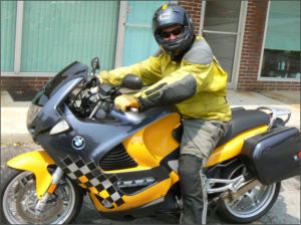
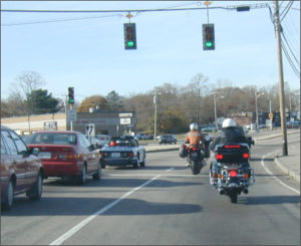

How To Choose The Right Kind Of Motorcycle
A motorcycle is a two-wheeled motor vehicle used for an easy and fast way of transportation. It is relatively more prevalent in developing countries of the
world because it is relatively cheap to maintain and operate. With the advancement in technology in recent years, the motorcycle is also specialized in
multiple styles. Today’s motorcycle are much more advanced than the past. It is a token of happiness in the family. But this key of happiness is not in
finding the best motorcycle available in the market rather than to find right kind of motorcycle for you which depends on upon your requirements and
type of riding you want to do.
Some motorcycles are specially designed keeping in mind the particular segment of the market while some are general and can be used by anyone.
For e.g. some motorcycles are more suited for young generation than the older one and vice versa. For a new rider, a lightweight motorcycle is always
better while learning. Similarly, it is always encouraging to place both the feet on the ground while stopping the motorcycle. Though the experienced rider
can stop the motorcycle even by using one foot on the surface. There are hundreds of models of motorcycles that are available in the market, and the user
must narrow down their search to find the right kind of motorcycle.
Choosing the Right Kind of Motorcycle
It is always a tough decision to choose the right kind of Motorcycle when so
many styles and models are available in the market. In fact, I believe that
one type of motorcycle is not enough to meet all the requirements of the
rider.
Therefore, while choosing the right kind of motorcycle for you, you must
first analyse and review the basic purpose for which you will use the
motorcycle. There are a lot of options available in the market and the
decision primarily depends on upon what you want to do with the bike.
It depends whether the rider wants to ride it on the road or off the road.
Once the purpose of the motorcycle is decided on then only you can choose
the right kind of motorcycle for you based on the below parameters:
•
Analyse the reason of buying a motorcycle
•
Types of roads on which you are mainly going to ride the motorcycle
•
Budget of buying the motorcycle
Five Basic Styles of Motorcycles
There are different types of motorcycles available in the market. These can be broadly classified into five categories as follows:
1. The Naked or Standard Bike
This is the basic type of motorcycle which puts the user in an upright position but not able to cope with the blowing wind.
Advantages of Standard bike
•
Standard Bike is available in variety of models with engine displacement
•
It is easy to ride and controllable
•
It is well-suited for the ride within the city which may or may not have an even surface.
Disadvantages of Standard Bike
•
Standard Bile is not able to cope with blowing wind
•
It makes the rider tired when driving for long periods of time
This type of motorcycle is ideally suited for daily commuter and who can use the motorcycle only occasionally for the long distance ride
2. Cruiser
There are many companies that manufacture cruiser type of motorcycles.
Advantages of Cruiser
•
In Cruiser, riders are in more relaxed riding position
•
Good Pickup – Most of the models of this type of motorcycle are 100 cc or more.
•
It is highly comfortable for long rides
•
This type of motorcycle consists of a windshield, luggage makes it a safe vehicle for long distance rides.
•
It is primarily used for touring purposes.
Disadvantages of Cruiser
•
It is having more room for the leg. Therefore to reduce this, suspension has to be raised
3. Touring
This type of motorcycle is designed in such a manner so that it remains comfortable for the rider when riding long distances. This type of vehicle is
available with large displacement engines.
Advantages of Touring Motorcycle
•
Touring Motorcycle has more fuel and luggage capacity. Therefore, it can go for ong distances hassle-free
•
It is equipped with windshield provides extra protection to the rider
•
It is equipped with sound systems used for entertainment purpose during a long ride
Disadvantages of Touring Motorcycle
•
It is more expensive as compared to other types. The price of this type of motorcycle is equivalent to the small car.
•
Touring Motorcycle is also heavy in weight which makes it difficult for new riders.
4. Sport Bike
It is another type of motorcycle primarily used for racing purpose. It is the legal version of motorcycle used for competition.
Advantages of Sport Bike
•
Riders can lean in the forward direction and ride it comfortably.
•
High speed vehicle
•
Excellent pickup. As this type of motorcycle is used for racing purpose, it normally comes in 600cc or more
Disadvantages of Sport Bike
•
It is not suited for new riders
5. Dual Purpose / Adventure Touring
This is the last category of motorcycle used for dual purpose i.e. touring as well as for riding the normal motorcycle.
Advantages of Dual Purpose Bike
•
It is most versatile motorcycle among all the different categories of motorcycles available in the market
•
Rider can ride the motorcycle in an upright position
•
These are designed for different road conditions. For e.g. rider can easily ride dual purpose motorcycle in highway having smooth road as well as in
city having uneven surface, or even off road
Disadvantages of Dual Purpose Bike
•
It is not very comfortable while riding for long distance
Conclusion
The two most important points always need to be kept in mind to a new rider is light weight of the motorcycle and able to touch both feet on the ground
while stopping. Luckily, seat height and weight of the motorcycle is always mentioned against each model as key features on the motorcycle manufactures
website.
Therefore, the rider can always glance at the given motorcycles specs carefully to find the right kind of motorcycle for your intended riding style. Once you
decide the purpose of usage of your motorcycle, the above guidelines will help you to find your dream motorcycle which will be the right fit for you.
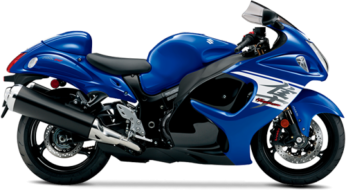
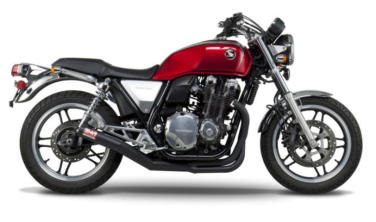
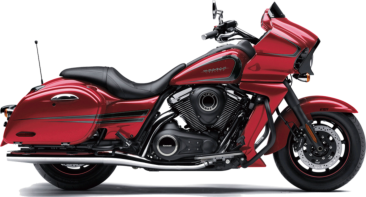
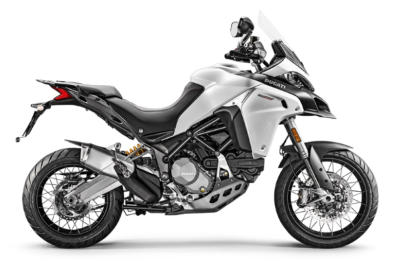

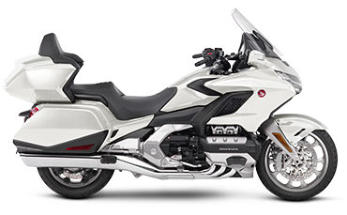

Living on the edge is part of what makes riding a motorcycle so gratifying. But when your safety is on the line, do you know everything you should about
when it’s important to play by the rules? You can learn a lot about motorcycle safety from a safety course, and we certainly suggest every rider take one.
However, there’s a lot to be learned from experienced riders that you might not pick up in a safety course. That’s why we’ve compiled this list for you that
includes 10 motorcycle safety tips from some of the industry’s top professionals. Keep reading…they may just change the way you ride!
10 Motorcycle Safety Tips all Riders Should Know
1. Take a motorcycle safety course
Some states including Missouri and Arkansas require a skills test before getting a motorcycle license,
and some also need a motorcycle safety course. Even if your state doesn't require you to take a
motorcycle safety class, you should seriously consider it. The course will teach you about the traffic
laws that apply to motorcycles in your state, how to react to emergency situations on a motorcycle
and will give you the opportunity to try out your new experiences in a controlled environment.
2. Get ready to roll
Before each ride, do a swift walk-around to make sure your horn, light and directional signals are working correctly. Check the belt, chain or shaft and the
brakes. Check the tires for wear and make sure they are set at the proper pressure.
3. Always wear a helmet
Pick a helmet that is approved by DOT (Federal Government's Department of Transportation) for the best protection. Modern models are comfortable and
lightweight without sacrificing on safety. Be prepared to spend quite a bit on your helmet. You cannot put a price on your life, so it is worth the high cost.
4. Wear the right riding gear
Those sandals and shorts may be comfortable, but they're a recipe for disaster when riding a motorcycle. If you slide out, your feet are going to be in for
a world of pain. And those shorts won't provide your legs with much protection either.
5. Ride defensively
When you leave the house for a ride, ALWAYS assume that everyone is out to get you! That may sound a little like paranoia, but think of it this way…
That car you meet at an intersection or the one that is approaching you on a lonely two lane back road, or any other interaction with traffic, just assume
they don't see you. Always be prepared in your mind to take defensive measures. With time this will become second nature and you’ll stay safe.
6. Never ride tired
Never ride tired. And we mean NEVER! Stop every 75-125 miles. Every rider knows their tolerance. And we all seem to like to push it. Set your rule.
Stop. Stretch. Refresh yourself and your brain.
7. Always look where you want to go
If you are looking at a curb, you're most likely going to hit the curb. If your looking off the cliff you don't want to ride off of, you’re bound to freak out
and hit the brakes or go over the edge. If traffic suddenly stops and you're staring at the cars in front of you, you may become their new rear bumper.
Instead, look for a clear spot, look through the turn, look where you want to go... it never fails and will keep you confident and up on two wheels.
8. Leave room for an escape route
When you come to a signal and stop, stay in gear and watch the traffic coming up behind you. Always leave room for an escape route.
9. Maintain a good speed
Speed limits exist for a reason, and all roads and routes have different ones. Make sure to remain within that limit to dodge dangers. Use basic sense
while addressing a report on your speed. If the path is empty and wide without traffic, it is okay to ride at top speed as per the limit set for that road.
10. Respect all traffic laws on the road
Most of the accidents that occur on roads are the result of reckless driving and disregard of traffic rules. The latter represent the guidelines on how we
should operate on the road and ignoring them puts you at a risk of being involved in an accident.
Final notes
Remember: when you are on a motorcycle, you're the only one on the road watching out for you. If your mind and emotions are anyplace other than the
road ahead, you're susceptible to executing rookie errors that can end in a crash, injuries or worse. when the above tips are considered and implemented
by motorcycle riders, accidents are less likely to happen. There is a good number of riders out there with years of riding experience that have never been
involved in a motorbike accident thanks to their discipline and ethics. Have a safe journey. Always.
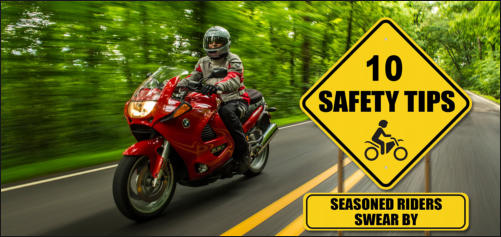
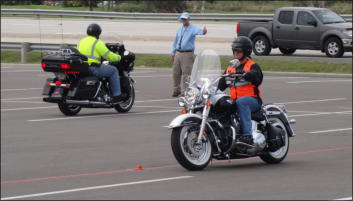
Motorcycle crashes are frequently caused due to road hazards. Seemingly minor obstacles on the road such as a wet pavement, small objects, debris, and
road surfaces that are uneven typically pose little risk to cars and other automobiles.
But they can prove dangerous to bikers and lead to grievous motorcycle accidents and injuries. This is why it is important for motorcyclists to have a clear
idea of what all may count as a road hazard. Motorcycle riders need to watch out for these dangers and adopt safeguards against them.
1. Slippery or Slick Surfaces
There are quite a few surfaces and objects that are or may turn slippery. Surfaces that
are slippery and slick can prove a greater risk to motorcycle riders than drivers of other
vehicles. This is because the two-wheeled bike design makes it a less stable driving
machine.
Furthermore, due to its lighter and smaller size, the motorcycle can slide a considerable
distance if it slips on the road, and a crash with another vehicle or a stationary object is
more likely. A slick surface can prove particularly risky when the motorcyclist is taking a
turn at speed.
Here are some types of debris and surfaces that can be slippery, especially during wet
conditions:
•
Leaves
•
Crosswalk lines
•
Anti-freeze liquid or oil
•
Trolley tracks
•
Other painted surfaces
When a dry spell is followed by rain, it is important for motorcycle riders to be careful. Driving any vehicle is difficult in the first drizzle or rain on a
sun-baked road. This is because the water blends with the mud and oil on the road to form a slippery coating. The riskiest time to drive a motorcycle on a
road is within the first half hour of a rainstorm.
2. Roads in State of Disrepair
If the road is in a bad condition or extremely rough because of an ongoing road resurfacing project or due to any building construction work nearby, it is
paramount for a motorcycle rider to be extra careful. Such broken or bumpy road condition can cause a motorbike to ‘jump’ if the rider is not in full control
of the vehicle, and lead to a crash.
3. Gravel on Pavement
Gravel on the pavement can be a precarious road hazard for motorcyclists, more so when navigating a corner. Winding roads are often more likely to have
gravel on pavement. Such roads require more cornering and are also favored by motorcycle riders because they are fun to navigate. However, motorcycle
riders who lack the awareness and skills to deal with such roads and those who like to ride at higher speeds are more prone to accidents caused by gravel
since it undermines the grip the tires have with the road.
4. Edge Break
An edge break refers to a pair of traffic lanes that are situated at varying heights. This does not pose a problem for car drivers because of their strong
center of gravity, but for motorcyclists, especially those travelling at a high speed along the freeway, it can be very risky. Even the slightest variation in
height can result in the rider losing control causing him or her to crash.
5. Expansion Joint
The strip of road that joins together two road sections or a segment of the road to a bridge is called an expansion joint. The joints are designed in such a
way as to allow the road to shrink or expand without rupturing. But the resulting bumpy surface can increase the risk of motorcycle crashes. It is also
possible that wet weather makes these surfaces more slippery and dangerous.
6. Open Bridge Joints
The support required to keep together two bridge sections is provided by open bridge joints. Motorcyclists can sometimes find it difficult to navigate bridge
joints that are extremely wide. If the rider is already aware of this potential hazard, they can be more cautious at such points and ride defensively.
7. Stray Animal on the Road
A motorcyclist can veer off the road or get thrown off balance, if they hit a stray animal. It is virtually impossible to predict if and when an animal will come
running onto the path. Swerving in an attempt to avoid hitting the animal can lead to a motorcycle crash. Large-sized animals (such as a deer) can post
even greater risk to motorcyclists. In areas that are populated with these animals, the motorcyclist should exercise more caution.
8. Water Puddles, Ice, and Snow
Certain types of (or worn) motorcycle tires might produce a hydroplaning effect when the vehicle passes through a water puddle. This can be risky for the
rider as it decreases the friction between the tire and the road. Ice and snow also present greater danger for motorcyclists for the same reason than drivers
of other types of vehicles.
9. Railway Tracks and Crossing
A serious accident may take place if the tires of a motorcycle lose traction on railway tracks. Wood or
metal pieces are sometimes noticeable between the tracks at some railway crossing points. When the
weather is wet, these spots can turn extremely slippery for a motorcycle rider.
10. Debris or Objects
Various types of debris or items strewn on the road (including objects that may have fallen off a truck
such as furniture, tools, or boxes) can prove more dangerous for motorcycles than cars.
Tree branches, rocks, and bits of tire tread can also create hazards on the road. These objects may not
only cause the rider to slip, but they may also strike the rider, sending him or her off-balance and causing
a crash.
Unexpected Bumps in the Road can be Dangerous
Sometimes, heavy vehicles passing on a road can push the tar up and lead to a series of bumps or humps to form in the midst of a lane. This hazard may
appear as an elongated or raised seam, or a lateral series of bumps, which can be perilous to a motorcycle. These bumps may affect the motorcycle’s
steering and suspension.
A major road bump can cause the front wheel of the motorcycle to lift off the ground and swerve the bike to either side, potentially into oncoming traffic
or into a bush. Such bumps and humps can be difficult to spot. They may not produce a shadow (except when the sun is really low), making them almost
invisible to the rider.
When moving in sync with traffic, motorcyclists should be alert and observe any cars ahead bouncing at any particular spot. This may indicate that there is
a pothole ahead, and the rider should be prepared to take preventive action.
However, such warning signs may not exist where the humps or bumps are found in the middle of a lane. Many vehicles will pass over them from either
side with ease, leaving no indication for the trailing motorcyclist. Furthermore, when riding behind a large vehicle such as a truck, much of the road area in
front is likely obscured. If this happens, the rider might unexpectedly find a bump appearing from beneath that vehicle.
One of the challenges is that the transportation authorities may not be aware of bumps that do not cause a problem for most vehicles (because few or no
complaints are made). The danger may not be identified and remedied until a motorcycle crash has already occurred. Thus, it is important to be alert and
constantly search the roadway for bumps and other hazards.
Never forget that motorcycles are different from cars. They need to be balanced on two tires with equal weight distribution to remain upright. Roadway
hazards can upset that balance and cause a fatal crash.
Blind Spot Safety Tips for Motorcycle Riders
Many motorcycle crashes today are caused by other motorists on the road. For example. other motorists often-times fail to watch for and see motorcyclists
traveling in their blind spots. Thus, it is vital that the motorcyclist be aware of this risk and take safety measures.
Here are a few tips to improve motorcycle blind spot safety:
•
Ensure there is a safety buffer surrounding you always. You can do this by maintain sufficient distance in front of you and providing enough
space for carrying out safety maneuvers.
•
Try to stay away from blind spots formed by a vehicle’s body pillars. Be conscious about blind spot risks when overtaking other vehicles.
•
When traveling in a group, make sure to maintain a safe distance and move in a staggered formation.
•
Make use of reflective clothing and tape for higher visibility.
•
In a situation where another car is encroaching upon your safety zone, tap your brakes lightly. If the motorist refuses to respect your space,
consider pulling off the road to let the vehicle pass.
•
How to Minimize Risk on Intersections?
Intersections pose the highest risk for motorcycle riders. When approaching an intersection, watch for vehicles switching lanes or making left turns ahead.
Do not assume your right of way will be respected. Also, be on the lookout for gravel, oil, and debris on the road at intersections. Stay watchful of surfaces
that might be uneven. At spots where there are traffic lights, be alert for vehicles that may suddenly stop (or that may not stop quickly enough).
One way of managing intersection risks is to anticipate what another vehicle might do. Assume the worst and put yourself in the best position to avoid the
potential hazard. For example, when you see another vehicle approaching the intersection, reduce speed and marginally move to away from the vehicle
within your lane (assuming it is safe to do so). When a vehicle approaches from the right, move to the left within your lane, and vice versa. This gives you
additional time and space to react, if required. The objective is to be ready without overreacting to a situation on the intersection. Overreacting to a
potential hazard may cause a crash as well.
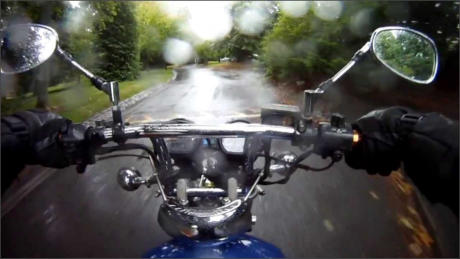
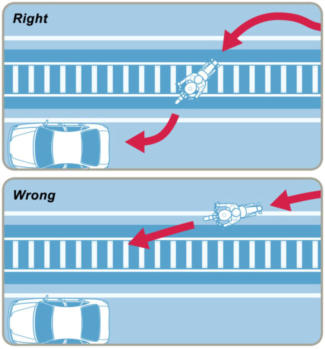

Motorcycle Road Hazards to Be Aware of
Riding a motorcycle isn’t just a form of transportation; it’s a way of life.
Anyone who rides a bike will tell you that they’ve made adjustments to
their wardrobe (“can I ride my bike wearing this?”), they’ve formed new
friendships, and they pay attention to the weather more than the average
human.
With this lifestyle, there’s also an element of danger to consider. The
National Highway Traffic Safety Administration reports that mile for mile,
motorcyclists face a 29x higher likelihood of being involved in a fatal
accident.
The good news is that, while we can’t guarantee you’ll never have a
wreck, you can greatly increase your chances of a thrilling ride that ends
with you arriving safely at your destination if you follow these five safety tips.
Tip 1: Wear the Right Gear
Top Motorcycle Safety Tips for Riders Everywhere
We can’t tell you how many times we’ve seen a dude with shorts and flip-flops riding with a similarly dressed passenger on the back. No matter how
skilled you are on a bike, accidents happen, and we can’t control how other drivers behave.
First and foremost, you should be wearing a helmet. You already know that’s the right move, even if your state doesn’t have laws requiring it.
In addition, make sure you have eye protection – glasses or goggles (if your helmet is open-faced). A leather jacket, boots that cover your ankles, and
gloves are also helpful.
Tip 2: Inspect Your Bike Before You Ride
Before you hit the open road, you should always take a careful look at your bike to ensure that it’s road ready. We’ve prepared a helpful checklist of
everything you should be looking for here.
If you don’t have time to check out that article, the basics are to do a 360 walk-around of your bike to ensure your tires are inflated with adequate tread,
your frame is free from cracks or damage, your lights are in working order, your hoses are attached and free from cracks, and your battery is in good
shape.
Even if you’re in a hurry to get going, take a couple of minutes to inspect your bike. It could save your life.
Tip 3: Make Sure You’re Visible
One of the biggest problems for drivers of passenger vehicles is that they don’t see motorcycles. Not only are they not accustomed to looking out for
motorcycles, but drivers can have a harder time seeing them due to their smaller size.
You can enhance your chances of always being seen by staying out of a driver’s blind spot. You should also keep your headlight on, even during the day.
Wearing bright clothing with reflective badges can help, as can always using signals when you turn. Stay on the side of caution and use both hand and
turn signals.
Tip 4: Keep Your Eyes on the Road
This tip might seem glaringly obvious, but it’s important to remember that you have to look out not only for distracted or reckless drivers, but also road
hazards. Potholes, obstructions, oil, sand, debris, railroad tracks, and more can conspire to make your bike lose control or traction.
And, we know this probably goes without saying, but make sure you have hands-free capability if you plan on taking or making phone calls or using a GPS
navigation system.
Tip 5: Take Safety and Riding Courses Regularly
You’ve probably already taken a safety course (if you haven’t, do that pronto), but have you considered taking a more advanced riding course? Once
you’ve mastered the basics, an advanced class can better equip you to drive defensively. From maneuvering and braking techniques to collision avoidance
techniques, the skills you learn here can upgrade and enhance your experience.
If it’s been awhile since your last class, consider a refresher to keep your skills and knowledge up to date.
Safety Should Be Your Top Priority
No matter how much fun riding a motorcycle is, you can’t do it if you’re seriously injured (or worse). Following these safety tips can better prepare you
for anything the road throws at you. At Law Tigers, we are a team of dedicated motorcycle riders here to support you. Contact us or visit our website to
learn more. Give us a call at 1-888-863-7216 if you or a loved one have been injured in a motorcycle accident. We’re here for you 24/7/365.
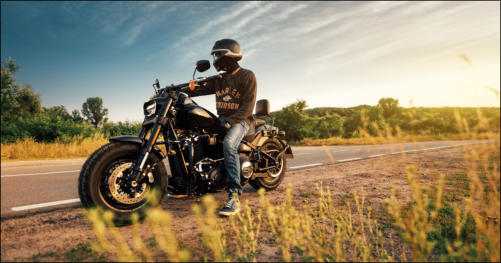





Copyright © 2025 - Ozark Rides, All Rights Reserved


Larson’s Law Corner
10 Common Motorcycle Accidents and
How To Avoid Them
Riding a motorcycle is dangerous. Luckily, bikes also give you the best
possible tools to avoid crashing, incredibly powerful brakes,
obstruction-free vision, excellent handling and very grippy tires. Here’s
how to use those tools, and your very own brain, to avoid one of these
common motorcycle accidents.
Motorcycle Safety:
Want to reduce your odds of dying in a crash? Get educated. New riders
should complete a basic rider course from the Motorcycle Safety
Foundation or similar while advanced tuition is available at race tracks.
It can be cheaper than you fear.
Safety gear doesn’t just help prevent injury in a crash, it can also make
riding more comfortable, put you in better control of your bike, and
help you be seen by other drivers. Bright colors on your helmet and
jacket/suit will help car drivers see you, potentially avoiding some of the
common accidents detailed below.
1: A Car Turns Left In Front Of You
The most common motorcycle accident. A car fails to see you or judges
your speed incorrectly, turning in front of you at an intersection. Blame
inattention, distraction, blind spots and even psychology; a driver
looking for cars perceives merely an absence of cars, not the presence
of a motorcycle.
How To Avoid It: Simple, you just need to see it coming. Part of your
job as a motorcyclist is to develop a precognitive sixth sense. Look for
signs that could indicate someone may turn in front of you: a car is at
an intersection waiting to turn, there’s a gap in traffic near an
intersection, driveway or parking lot. In either situation, slow down,
cover your brakes and get ready to take evasive action. Yes, you do
need to take something as innocuous as a car waiting in a turn lane as
a major and immediate threat to your life. You also need to account for
objects outside of your vision. Gaps in traffic indicate the possibility of
someone coming through that gap, even if you can’t see them. Again,
MAJOR THREAT, PREPARE FOR EVASIVE ACTION.
And once you’ve identified said threat, you can work it through levels of
severity. Is the driver clearly able to see you, without obstruction from
their window pillars, trees or signs? Is that person actually looking? Are
they looking at you? How are they situated in the road? What is their
speed? Where are their wheels pointing?
Look at their wheels, not the car – they’ll give you the first clue of
movement. During all this, also be aware of what’s behind and to your
side. Should you need to take evasive action, you’ll need to know your
routes of escape. It’s no good braking in time to avoid a turning car,
only to be swatted from behind by a tailgating SUV. What’s the road
surface like? Is it going to be able to handle the full force of your brakes
or are you going to lock them? You do know how to use the full ability
of your brakes, right?
Under no circumstances should you “lay the bike down.” Your best
chance of survival comes from shedding as much speed as possible
pre-collision, and you’re going to be able to do that best with the bike
completely upright, using both brakes. Even if you only have time to
lose 10 or 20 mph, that could be the difference between going
home with bruises and going home at all.
2: You Hit Gravel In A Blind Corner
You’re out riding the twisties when, seemingly without warning, you
round a corner to find a patch of sand/gravel/leaves/horse dung/
whatever in your path. You put your front tire in it and wipe out.
How To Avoid It: Don’t hit it in the first place. Ride at a pace where your
reaction time and ability to take action fit within your range of vision.
On the road, “Slow In, Fast Out” is an effective rule of thumb. Enter a
corner wide, to increase your vision and at an easy pace. You can pick
up the speed on the way out, once you can see.
Trail braking is a slightly more advanced skill that you’ll need to learn
and practice on a track before applying on the road. Using it, you brake
all the way to the apex using the front brake before swapping brake for
throttle. Since you’re already on the brakes and the bike’s weight is
distributed forward, compressing the front suspension and increasing
the size of the front tire’s contact patch, you can easily tighten your line
by applying a little more brake or widen it by letting off. Doing so should
help you avoid obstacles such as gravel.
Another advanced skill, which is oddly controversial in rule-loving
America, but which is taught by advanced police riders abroad, is to
maximize vision by using the full width of the road, regardless of lanes.
Vision equals safety equals speed. Again, learn this from a trained
professional before trying it yourself.
3: You Entered A Corner Too Fast
And now it’s unexpectedly tightening and you’re just not going to make
it around. Oh no.
How To Avoid It: Don’t be a dummy. Only ride as fast as you can see
and use visual clues like telephone polls and signs to judge a road’s
direction, even if that road is disappearing over a blind crest.
If you do find yourself going too fast in a corner, the best approach is to
trust the bike and try to ride it out. The bike is likely more capable than
you are, so it’s really you that’s not capable of making it around. Take as
much lean out of the bike as possible by hanging off, look where you
want to go and be as smooth as possible on the controls. Do not whack
on the brakes, chop the throttle or do anything else that may upset the
bike and cause a loss of traction. Don’t panic if a peg or knee or
something else touches down, just try to hold that lean angle, look for
the corner exit and ride it out.
This is another situation in which trail braking can be a real help,
allowing you to safely shed speed while already in the corner.
4: A Car Changes Lane Into You
You’re riding in traffic when a car in another lane suddenly veers into
the space you’re occupying. Remember, our tiny motorcycles can easily
fit into blind spots and drivers looking for cars aren’t psychologically
programmed to see motorcycles.
How To Avoid It: Be aware of where blind spots lie and spend as little
time in them as possible. If you can see a driver's eyes in their mirrors,
then they have the ability to see you, too (But remember that still
doesn't always mean they're looking).
Beware of situations where lane changes become more possible. Is
highway traffic slowing, with one lane moving faster than others?
People are going to want to be in that lane. Don’t be where they want
to be.
Look for signs of a car changing lanes: turn signals, wheels turning, the
car wandering around its own lane while the driver checks his/her
mirrors and, of course, the driver’s head moving. Be aware of all that, in
all the cars around you, at all times, and you’ll be good.
5: A Car Hits You From Behind
You come to a halt a stop sign/cross walk/intersection/to avoid a family
of baby ducks when, the driver behind you doesn’t see you or isn’t
trying to and plows into you at high speed. The most common car
accident is a “fender bender.” A fender bender can kill a motorcyclist.
How To Avoid It: Use cars as your very own crumple zone. A single car
stopped at a multi-lane stoplight, with more cars coming from behind?
Pull in front of it (wave nicely) and you’re cushioned from any
subsequent impacts. Between a line of cars works just as well.
No free crumple zones available? Stop to the side rather than the center
of a lane, rapidly flash your brake light by tapping a brake lever, keep
the bike in gear and your right hand on the throttle. Pay attention to
what’s coming up behind you and be prepared to scoot away should it
appear someone’s about to come plowing into you.
Be particularly aware in situations where there’s bad visibility, at times
when drunk driving is prevalent (do all the bars around you let out at
1am?) and when stops are unexpected, such as at pedestrian
crosswalks on very busy streets and stuff like those cute baby ducks
crossing the road.
6: Your Riding Buddies Are Idiots
You’ve seen it happen. A group is out for a ride when one of them stops
suddenly or something similar. His buddy is too busy daydreaming to
realize and hits him from
behind. This has happened to us; it can happen to anyone.
How To Avoid It: Make sure everyone is aware of proper group riding
etiquette and knows to ride in a staggered formation. You’d be amazed
how many people are unaware of this simple technique. Doing so
increases vision and moves bikes out of line with each other, meaning
a temporary lapse in attention wont’ result in a
collision. Pick smarter riding buddies or do what I do: ride alone.
7: You Locked The Front Brake
Oh no, a deer/cute girl/cop/stopped traffic. You grab a fistful of front
brake and, next thing you know, you’re lying on the ground, watching
your bike cartwheel down the street.
How To Avoid It: Learn to use your front brake. It might seem
counterintuitive, but that front brake is the most powerful and
difficult-to-master component on your motorcycle; it can alter your
speed much more quickly than your engine.
If you’re just learning to ride, have simply never mastered this skill or
bought a new bike and need to learn it, find a big, empty parking lot
and start practicing. From a set speed (say, 30 mph), start braking at a
certain mark, then repeat ad infinitum until you’ve reduced your
braking distance as much as possible. You should be able to feel the
tire on the very edge of locking up and the rear wheel lifting off the
ground. Then go and practice at higher and higher speeds until you
can employ the maximum braking ability of your motorcycle reliably
and safely.
Or just buy a bike with ABS, remember you have it, and squeeze the
lever as hard as you can when you need to make an emergency stop.
8: A Car Opened Its Door
The biggest gap in traffic was between a line of parked cars and a
stationary line of active traffic. So you go scooting through it when, all
of a sudden, Nathan-no-look swings his door wide open right in front
of you.
How To Avoid It: Never, ever, ever, ever ride between an active traffic
lane and parked cars. Not just because of the opening doors thing, but
because pedestrians step out, cars pull out so they can see, and for a
million other reasons. Just don’t do it. If you do, somehow, find yourself
in a door-opening situation though, follow all the advice above and
brake as hard as possible. Even if a collision is inevitable, shedding
even a small fraction of your speed can really help.
Riders call the area next to parked cars, within a door's width “The
Death Zone” for a reason.
9: It’s Slippery!
Stuff is coming out of the sky! That stuff is cold, wet and, surprise
surprise, slippery. Listen to experienced wet weather riders and don’t
panic.
How To Avoid It: Does your bike have decent tires on it or were you
silly and decided that running track rubber on the road was a good
idea? Hint: it’s not. So long as you’re running reasonable tires and those
tires aren’t worn out, you’ll be surprised at how well a motorcycle does
in wet or even snowy conditions. Just slow down and be as smooth as
possible on the controls.
In the wet, stuff like manhole covers become super, extra slippery and
you’ll need to watch out for oil and diesel on the road as well. Look for
patches of rainbow and avoid those. If it hasn’t rained for a while, the
first hour or so of rainfall is the most treacherous; it lifts all the oils and
whatnot out of the pavement, floating it on top. Treat yourself to a hot
cup of coffee and wait for a solid downpour to wash all that junk away.
Also beware of the limited visibility rain creates for other drivers and
their general ineptitude; car drivers don’t seem to understand that
slippery conditions necessitate longer following distances and earlier
braking.
I advocate keeping revs up in the wet. The thinking is that, should your
rear spin up, you’ll be using a smaller amount of throttle opening,
allowing you to regain traction much easier than if you’re riding at
30mph in 6th, at wide open throttle.
10: The Most Common Bike Accident
According to the Hurt Report — the largest study ever conducted on
motorcycle accident causation — alcohol is a factor in 50 percent of all
bike wrecks.
How To Avoid It: Don’t drink and ride.
5 Tips for Surviving Intersections
Added 7/21/2019
Intersections are very dangerous places to be. The reason drivers
collide with motorcycles is because they either don’t see us or
they misjudge our approach speed or distance. Here are some
tips to help you become more visible at intersections.
1. Don’t Hide. Select lane positions that put you in open view so
drivers can see you. This means not tailgating the car or truck in
front and riding in the left or right portion of your lane to make
sure drivers waiting to turn into or across your lane can clearly
see you.
2. Move Within Your Lane. Even if you are in plain sight, don’t
assume drivers see you. People see what they expect to see and
a motorcycle may not register in their consciousness, even if they
are looking at you. Another reason drivers can look at you but
not “see” you is because of “motion-induced blindness” where
stationary objects disappear when surrounded by a moving
background, such as busy traffic. Realize that you appear
stationary if you approach a driver straight on. Even if drivers do
see you they may not be able to accurately judge closing speed
and approach distance because of your bikes relatively narrow
frontal area. One trick is to move across your lane as you
approach drivers at intersections to visually “present” the broader
side area of your bike. For a more dramatic display, weave back
and forth in your lane to “sweep” your headlight across drivers’
field of view. You don’t need to go crazy; swerving a few feet left
and right a couple of times should do the trick. And weave only
if it’s safe to do so.
3. Be Bright. It’s smart to wear brightly colored riding gear that
gets attention and separates you from the busy background.
This includes wearing a light-colored helmet and jacket or vest,
as well as putting reflective material on your bike and riding gear
for being seen in low light situations. Don’t rely on noise. While
loud pipes get attention, sound is not reliable for telling drivers
exactly where you are. Not only that, but loud pipes direct most
of the exhaust noise rearward rather than forward where the
majority of dangers materialize. Selective use of an aftermarket
horn is as effective and a lot less annoying to others.
4. Be Ready. Even after using these measures you will likely
encounter drivers who invade your right or way. Being mentally
ready makes you more likely to approach cautiously and respond
skillfully when someone cuts you off. Being ready means actively
looking for trouble, slowing down and covering your brakes
before approaching intersections even when everything looks to
be in order. But, don’t be a victim. Instead, reflect on your part
in any close calls. You may find that (if you’re truly honest and
willing) most times you can identify at least one thing you did or
didn’t do to prevent the incident.
5. The best riders predict that a driver might cut them off
(or whatever) and are already prepared by covering their brakes
and positioning themselves to give maximum time and space to
respond. All the best practices in the world sometimes cannot
prevent some crashes. We can’t change the behavior of careless
drivers. All we can do is minimize the risk. And wear good
protection in case the unavoidable happens.



How To Choose The Right Kind Of Motorcycle
A motorcycle is a two-wheeled motor vehicle used for an easy
and fast way of transportation. It is relatively more prevalent in
developing countries of the world because it is relatively cheap to
maintain and operate. With the advancement in technology in
recent years, the motorcycle is also specialized in multiple styles.
Today’s motorcycle are much more advanced than the past. It is
a token of happiness in the family. But this key of happiness is
not in finding the best motorcycle available in the market rather
than to find right kind of motorcycle for you which depends on
upon your requirements and type of riding you want to do.
Some motorcycles are specially designed keeping in mind the
particular segment of the market while some are general and
can be used by anyone. For e.g. some motorcycles are more
suited for young generation than the older one and vice versa.
For a new rider, a lightweight motorcycle is always better while
learning. Similarly, it is always encouraging to place both the
feet on the ground while stopping the motorcycle. Though the
experienced rider can stop the motorcycle even by using one
foot on the surface. There are hundreds of models of
motorcycles that are available in the market, and the user must
narrow down their search to find the right kind of motorcycle.
Choosing the Right Kind of Motorcycle
It is always a tough decision to choose the right kind of
Motorcycle when so many styles and models are available in the
market. In fact, I believe that one type of motorcycle is not
enough to meet all the requirements of the rider.
Therefore, while choosing the right kind of motorcycle for you,
you must first analyse and review the basic purpose for which
you will use the motorcycle. There are a lot of options available
in the market and the decision primarily depends on upon what
you want to do with the bike. It depends whether the rider wants
to ride it on the road or off the road.
Once the purpose of the motorcycle is decided on then only you
can choose the right kind of motorcycle for you based on the
below parameters:
•
Analyse the reason of buying a motorcycle
•
Types of roads on which you are mainly going to ride the
motorcycle
•
Budget of buying the motorcycle
Five Basic Styles of Motorcycles
There are different types of motorcycles available in the market.
These can be broadly classified into five categories as follows:
1. The Naked or Standard Bike
This is the basic type of motorcycle which puts the user in an
upright position but not able to cope with the blowing wind.
Advantages of Standard bike
•
Standard Bike is available in variety of models with engine
displacement
•
It is easy to ride and controllable
•
It is well-suited for the ride within the city which may or
may not have an even surface.
Disadvantages of Standard Bike
•
Standard Bile is not able to cope with blowing wind
•
It makes the rider tired when driving for long periods of
time
This type of motorcycle is ideally suited for daily commuter and
who can use the motorcycle only occasionally for the long
distance ride
2. Cruiser
There are many companies that manufacture cruiser type of
motorcycles.
Advantages of Cruiser
•
In Cruiser, riders are in more relaxed riding position
•
Good Pickup – Most of the models of this type of motorcycle
are 100 cc or more.
•
It is highly comfortable for long rides
•
This type of motorcycle consists of a windshield, luggage
makes it a safe vehicle for long distance rides.
•
It is primarily used for touring purposes.
Disadvantages of Cruiser
•
It is having more room for the leg. Therefore to reduce this,
suspension has to be raised
3. Touring
This type of motorcycle is designed in such a manner so that it
remains comfortable for the rider when riding long distances.
This type of vehicle is available with large displacement engines.
Advantages of Touring Motorcycle
•
Touring Motorcycle has more fuel and luggage capacity.
Therefore, it can go for ong distances hassle-free
•
It is equipped with windshield provides extra protection to
the rider
•
It is equipped with sound systems used for entertainment
purpose during a long ride
Disadvantages of Touring Motorcycle
•
It is more expensive as compared to other types. The price
of this type of motorcycle is equivalent to the small car.
•
Touring Motorcycle is also heavy in weight which makes it
difficult for new riders.
4. Sport Bike
It is another type of motorcycle primarily used for racing purpose.
It is the legal version of motorcycle used for competition.
Advantages of Sport Bike
•
Riders can lean in the forward direction and ride it
comfortably.
•
High speed vehicle
•
Excellent pickup. As this type of motorcycle is used for
racing purpose, it normally comes in 600cc or more
Disadvantages of Sport Bike
•
It is not suited for new riders
5. Dual Purpose / Adventure Touring
This is the last category of motorcycle used for dual purpose i.e.
touring as well as for riding the normal motorcycle.
Advantages of Dual Purpose Bike
•
It is most versatile motorcycle among all the different
categories of motorcycles available in the market
•
Rider can ride the motorcycle in an upright position
•
These are designed for different road conditions. For e.g.
rider can easily ride dual purpose motorcycle in highway
having smooth road as well as in city having uneven
surface, or even off road
Disadvantages of Dual Purpose Bike
•
It is not very comfortable while riding for long distance
Conclusion
The two most important points always need to be kept in mind
to a new rider is light weight of the motorcycle and able to touch
both feet on the ground while stopping. Luckily, seat height and
weight of the motorcycle is always mentioned against each model
has key features on the motorcycle manufactures website.
Therefore, the rider can always glance at the given motorcycles
specs carefully to find the right kind of motorcycle for your
intended riding style. Once you decide the purpose of usage of
your motorcycle, the above guidelines will help you to find your
dream motorcycle which will be the right fit for you.




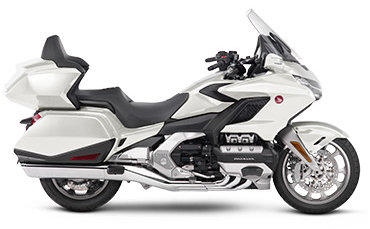

Living on the edge is part of what makes riding a motorcycle so
gratifying. But when your safety is on the line, do you know
everything you should about when it’s important to play by the
rules? You can learn a lot about motorcycle safety from a safety
course, and we certainly suggest every rider take one. However,
there’s a lot to be learned from experienced riders that you might
not pick up in a safety course. That’s why we’ve compiled this list
for you that includes 10 motorcycle safety tips from some of the
industry’s top professionals. Keep reading…they may just change
the way you ride!
10 Motorcycle Safety Tips all Riders Should Know
1. Take a motorcycle safety course
Some states including Missouri and Arkansas require a skills test
before getting a motorcycle license, and some also need a
motorcycle safety course. Even if your state doesn't require you
to take a motorcycle safety class, you should seriously consider it.
The course will teach you about the traffic laws that apply to
motorcycles in your state, how to react to emergency situations
on a motorcycle and will give you the opportunity to try out your
new experiences in a controlled environment.
2. Get ready to roll
Before each ride, do a swift walk-around to make sure your horn,
light and directional signals are working correctly. Check the belt,
chain or shaft and the brakes. Check the tires for wear and make
sure they are set at the proper pressure.
3. Always wear a helmet
Pick a helmet that is approved by DOT (Federal Government's
Department of Transportation) for the best protection. Modern
models are comfortable and lightweight without sacrificing on
safety. Be prepared to spend quite a bit on your helmet. You
cannot put a price on your life, so it is worth the high cost.
4. Wear the right riding gear
Those sandals and shorts may be comfortable, but they're a
recipe for disaster when riding a motorcycle. If you slide out,
your feet are going to be in for a world of pain. And those shorts
won't provide your legs with much protection either.
5. Ride defensively
When you leave the house for a ride, ALWAYS assume that
everyone is out to get you! That may sound a little like paranoia,
but think of it this way… That car you meet at an intersection or
the one that is approaching you on a lonely two lane back road,
or any other interaction with traffic, just assume they don't see
you. Always be prepared in your mind to take defensive
measures. With time this will become second nature and you’ll
stay safe.
6. Never ride tired
Never ride tired. And we mean NEVER! Stop every 75-125 miles.
Every rider knows their tolerance. And we all seem to like to
push it. Set your rule. Stop. Stretch. Refresh yourself and your
brain.
7. Always look where you want to go
If you are looking at a curb, you're most likely going to hit the
curb. If your looking off the cliff you don't want to ride off of,
you’re bound to freak out and hit the brakes or go over the edge.
If traffic suddenly stops and you're staring at the cars in front of
you, you may become their new rear bumper. Instead, look for a
clear spot, look through the turn, look where you want to go... it
never fails and will keep you confident and up on two wheels.
8. Leave room for an escape route
When you come to a signal and stop, stay in gear and watch the
traffic coming up behind you. Always leave room for an escape
route.
9. Maintain a good speed
Speed limits exist for a reason, and all roads and routes have
different ones. Make sure to remain within that limit to dodge
dangers. Use basic sense while addressing a report on your
speed. If the path is empty and wide without traffic, it is okay to
ride at top speed as per the limit set for that road.
10. Respect all traffic laws on the road
Most of the accidents that occur on roads are the result of
reckless driving and disregard of traffic rules. The latter
represent the guidelines on how we should operate on the road
and ignoring them puts you at a risk of being involved in an
accident.
Final notes
Remember: when you are on a motorcycle, you're the only one
on the road watching out for you. If your mind and emotions are
anyplace other than the road ahead, you're susceptible to
executing rookie errors that can end in a crash, injuries or worse.
when the above tips are considered and implemented by
motorcycle riders, accidents are less likely to happen. There is a
good number of riders out there with years of riding experience
that have never been involved in a motorbike accident thanks to
their discipline and ethics. Have a safe journey. Always.
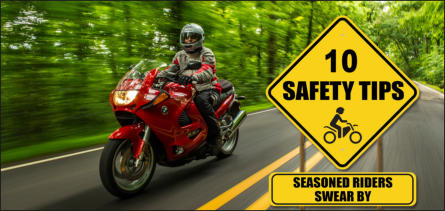
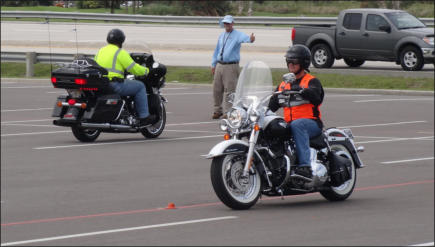

Motorcycle crashes are frequently caused due to road hazards.
Seemingly minor obstacles on the road such as a wet pavement,
small objects, debris, and road surfaces that are uneven typically
pose little risk to cars and other automobiles.
But they can prove dangerous to bikers and lead to grievous
motorcycle accidents and injuries. This is why it is important for
motorcyclists to have a clear idea of what all may count as a road
hazard. Motorcycle riders need to watch out for these dangers and
adopt safeguards against them.
1. Slippery or Slick Surfaces
There are quite a few surfaces and objects that are or may turn
slippery. Surfaces that are slippery and slick can prove a greater
risk to motorcycle riders than drivers of other vehicles. This is
because the two-wheeled bike design makes it a less stable
driving machine.
Furthermore, due to its lighter and smaller size, the motorcycle
can slide a considerable distance if it slips on the road, and a
crash with another vehicle or a stationary object is more likely.
A slick surface can prove particularly risky when the motorcyclist
is taking a turn at speed.
Here are some types of debris and surfaces that can be slippery,
especially during wet conditions:
•
Leaves
•
Crosswalk lines
•
Anti-freeze liquid or oil
•
Trolley tracks
•
Other painted surfaces
When a dry spell is followed by rain, it is important for motorcycle
riders to be careful. Driving any vehicle is difficult in the first
drizzle or rain on a sun-baked road. This is because the water
blends with the mud and oil on the road to form a slippery
coating. The riskiest time to drive a motorcycle on a road is within
the first half hour of a rainstorm.
2. Roads in State of Disrepair
If the road is in a bad condition or extremely rough because of an
ongoing road resurfacing project or due to any building
construction work nearby, it is paramount for a motorcycle rider to
be extra careful. Such broken or bumpy road condition can cause
a motorbike to ‘jump’ if the rider is not in full control of the
vehicle, and lead to a crash.
3. Gravel on Pavement
Gravel on the pavement can be a precarious road hazard for
motorcyclists, more so when navigating a corner. Winding roads
are often more likely to have gravel on pavement. Such roads
require more cornering and are also favored by motorcycle riders
because they are fun to navigate. However, motorcycle riders who
lack the awareness and skills to deal with such roads and those
who like to ride at higher speeds are more prone to accidents
caused by gravel since it undermines the grip the tires have with
the road.
4. Edge Break
An edge break refers to a pair of traffic lanes that are situated at
varying heights. This does not pose a problem for car drivers
because of their strong center of gravity, but for motorcyclists,
especially those travelling at a high speed along the freeway, it
can be very risky. Even the slightest variation in height can result
in the rider losing control causing him or her to crash.
5. Expansion Joint
The strip of road that joins together two road sections or a
segment of the road to a bridge is called an expansion joint. The
joints are designed in such a way as to allow the road to shrink or
expand without rupturing. But the resulting bumpy surface can
increase the risk of motorcycle crashes. It is also possible that
wet weather makes these surfaces more slippery and dangerous.
6. Open Bridge Joints
The support required to keep together two bridge sections is
provided by open bridge joints. Motorcyclists can sometimes find
it difficult to navigate bridge joints that are extremely wide. If the
rider is already aware of this potential hazard, they can be more
cautious at such points and ride defensively.
7. Stray Animal on the Road
A motorcyclist can veer off the road or get thrown off balance,
if they hit a stray animal. It is virtually impossible to predict if
and when an animal will come running onto the path. Swerving in
an attempt to avoid hitting the animal can lead to a motorcycle
crash. Large-sized animals (such as a deer) can post even greater
risk to motorcyclists. In areas that are populated with these
animals, the motorcyclist should exercise more caution.
8. Water Puddles, Ice, and Snow
Certain types of (or worn) motorcycle tires might produce a
hydroplaning effect when the vehicle passes through a water
puddle. This can be risky for the rider as it decreases the friction
between the tire and the road. Ice and snow also present greater
danger for motorcyclists for the same reason than drivers of other
types of vehicles.
9. Railway Tracks and Crossing
A serious accident may take place if the tires of a motorcycle lose
traction on railway tracks. Wood or metal pieces are sometimes
noticeable between the tracks at some railway crossing points.
When the weather is wet, these spots can turn extremely slippery
for a motorcycle rider.
10. Debris or Objects
Various types of debris or items strewn on the road (including
objects that may have fallen off a truck such as furniture, tools,
or boxes) can prove more dangerous for motorcycles than cars.
Tree branches, rocks, and bits of tire tread can also create
hazards on the road. These objects may not only cause the rider
to slip, but they may also strike the rider, sending him or her
off-balance and causing a crash.
Unexpected Bumps in the Road can be Dangerous
Sometimes, heavy vehicles passing on a road can push the tar up
and lead to a series of bumps or humps to form in the midst of a
lane. This hazard may appear as an elongated or raised seam, or
a lateral series of bumps, which can be perilous to a motorcycle.
These bumps may affect the motorcycle’s steering and suspension.
A major road bump can cause the front wheel of the motorcycle
to lift off the ground and swerve the bike to either side, potentially
into oncoming traffic or into a bush. Such bumps and humps can
be difficult to spot. They may not produce a shadow (except when
the sun is really low), making them almost invisible to the rider.
When moving in sync with traffic, motorcyclists should be alert
and observe any cars ahead bouncing at any particular spot.
This may indicate that there is a pothole ahead, and the rider
should be prepared to take preventive action.
However, such warning signs may not exist where the humps or
bumps are found in the middle of a lane. Many vehicles will pass
over them from either side with ease, leaving no indication for the
trailing motorcyclist. Furthermore, when riding behind a large
vehicle such as a truck, much of the road area in front is likely
obscured. If this happens, the rider might unexpectedly find a
bump appearing from beneath that vehicle.
One of the challenges is that the transportation authorities may
not be aware of bumps that do not cause a problem for most
vehicles (because few or no complaints are made). The danger
may not be identified and remedied until a motorcycle crash has
already occurred. Thus, it is important to be alert and constantly
search the roadway for bumps and other hazards.
Never forget that motorcycles are different from cars. They need
to be balanced on two tires with equal weight distribution to
remain upright. Roadway hazards can upset that balance and
cause a fatal crash.
Blind Spot Safety Tips for Motorcycle Riders
Many motorcycle crashes today are caused by other motorists on
the road. For example. other motorists often-times fail to watch
for and see motorcyclists traveling in their blind spots. Thus, it is
vital that the motorcyclist be aware of this risk and take safety
measures.
Here are a few tips to improve motorcycle blind spot safety:
•
Ensure there is a safety buffer surrounding you always.
You can do this by maintain sufficient distance in front
of you and providing enough space for carrying out
safety maneuvers.
•
Try to stay away from blind spots formed by a vehicle’s
body pillars. Be conscious about blind spot risks when
overtaking other vehicles.
•
When traveling in a group, make sure to maintain a
safe distance and move in a staggered formation.
•
Make use of reflective clothing and tape for higher
visibility.
•
In a situation where another car is encroaching upon
your safety zone, tap your brakes lightly. If the
motorist refuses to respect your space, consider pulling
off the road to let the vehicle pass.
•
How to Minimize Risk on Intersections?
Intersections pose the highest risk for motorcycle riders. When
approaching an intersection, watch for vehicles switching lanes or
making left turns ahead. Do not assume your right of way will be
respected. Also, be on the lookout for gravel, oil, and debris on
the road at intersections. Stay watchful of surfaces that might be
uneven. At spots where there are traffic lights, be alert for
vehicles that may suddenly stop (or that may not stop quickly
enough).
One way of managing intersection risks is to anticipate what
another vehicle might do. Assume the worst and put yourself in
the best position to avoid the potential hazard. For example,
when you see another vehicle approaching the intersection,
reduce speed and marginally move to away from the vehicle
within your lane (assuming it is safe to do so). When a vehicle
approaches from the right, move to the left within your lane, and
vice versa. This gives you additional time and space to react, if
required. The objective is to be ready without overreacting to a
situation on the intersection. Overreacting to a potential hazard
may cause a crash as well.



Motorcycle Road Hazards to Be Aware of
Riding a motorcycle isn’t just a form of transportation; it’s a way
of life. Anyone who rides a bike will tell you that they’ve made
adjustments to their wardrobe (“can I ride my bike wearing
this?”), they’ve formed new friendships, and they pay attention
to the weather more than the average human.
With this lifestyle, there’s also an element of danger to consider.
The National Highway Traffic Safety Administration reports that
mile for mile, motorcyclists face a 29x higher likelihood of being
involved in a fatal accident.
The good news is that, while we can’t guarantee you’ll never
have a wreck, you can greatly increase your chances of a
thrilling ride that ends with you arriving safely at your
destination if you follow these five safety tips.
Tip 1: Wear the Right Gear
Top Motorcycle Safety Tips for
Riders Everywhere
We can’t tell you how many times we’ve seen a dude with shorts
and flip-flops riding with a similarly dressed passenger on the
back. No matter how skilled you are on a bike, accidents happen,
and we can’t control how other drivers behave.
First and foremost, you should be wearing a helmet. You already
know that’s the right move, even if your state doesn’t have laws
requiring it. In addition, make sure you have eye protection –
glasses or goggles (if your helmet is open-faced). A leather
jacket, boots that cover your ankles, and gloves are also helpful.
Tip 2: Inspect Your Bike Before You Ride
Before you hit the open road, you should always take a careful
look at your bike to ensure that it’s road ready. We’ve prepared
a helpful checklist of everything you should be looking for here.
If you don’t have time to check out that article, the basics are
to do a 360 walk-around of your bike to ensure your tires are
inflated with adequate tread, your frame is free from cracks or
damage, your lights are in working order, your hoses are
attached and free from cracks, and your battery is in good shape.
Even if you’re in a hurry to get going, take a couple of minutes
to inspect your bike. It could save your life.
Tip 3: Make Sure You’re Visible
One of the biggest problems for drivers of passenger vehicles is
that they don’t see motorcycles. Not only are they not
accustomed to looking out for motorcycles, but drivers can have
a harder time seeing them due to their smaller size.
You can enhance your chances of always being seen by staying
out of a driver’s blind spot. You should also keep your headlight
on, even during the day. Wearing bright clothing with reflective
badges can help, as can always using signals when you turn.
Stay on the side of caution and use both hand and turn signals.
Tip 4: Keep Your Eyes on the Road
This tip might seem glaringly obvious, but it’s important to
remember that you have to look out not only for distracted or
reckless drivers, but also road hazards. Potholes, obstructions,
oil, sand, debris, railroad tracks, and more can conspire to make
your bike lose control or traction.
And, we know this probably goes without saying, but make sure
you have hands-free capability if you plan on taking or making
phone calls or using a GPS navigation system.
You’ve probably already taken a safety course (if you haven’t,
do that pronto), but have you considered taking a more
advanced riding course? Once you’ve mastered the basics, an
advanced class can better equip you to drive defensively. From
maneuvering and braking techniques to collision avoidance
techniques, the skills you learn here can upgrade and enhance
your experience.
If it’s been awhile since your last class, consider a refresher to
keep your skills and knowledge up to date.
No matter how much fun riding a motorcycle is, you can’t do it
if you’re seriously injured (or worse). Following these safety tips
can better prepare you for anything the road throws at you.
At Law Tigers, we are a team of dedicated motorcycle riders
here to support you. Contact us or visit our website to learn
more. Give us a call at 1-888-863-7216 if you or a loved one
have been injured in a motorcycle accident.
We’re here for you 24/7/365.
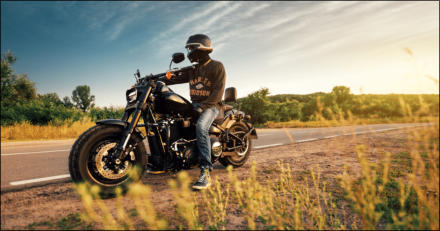
Tip 5: Take Safety and Riding Courses Regularly
Safety Should Be Your Top Priority



MENU


